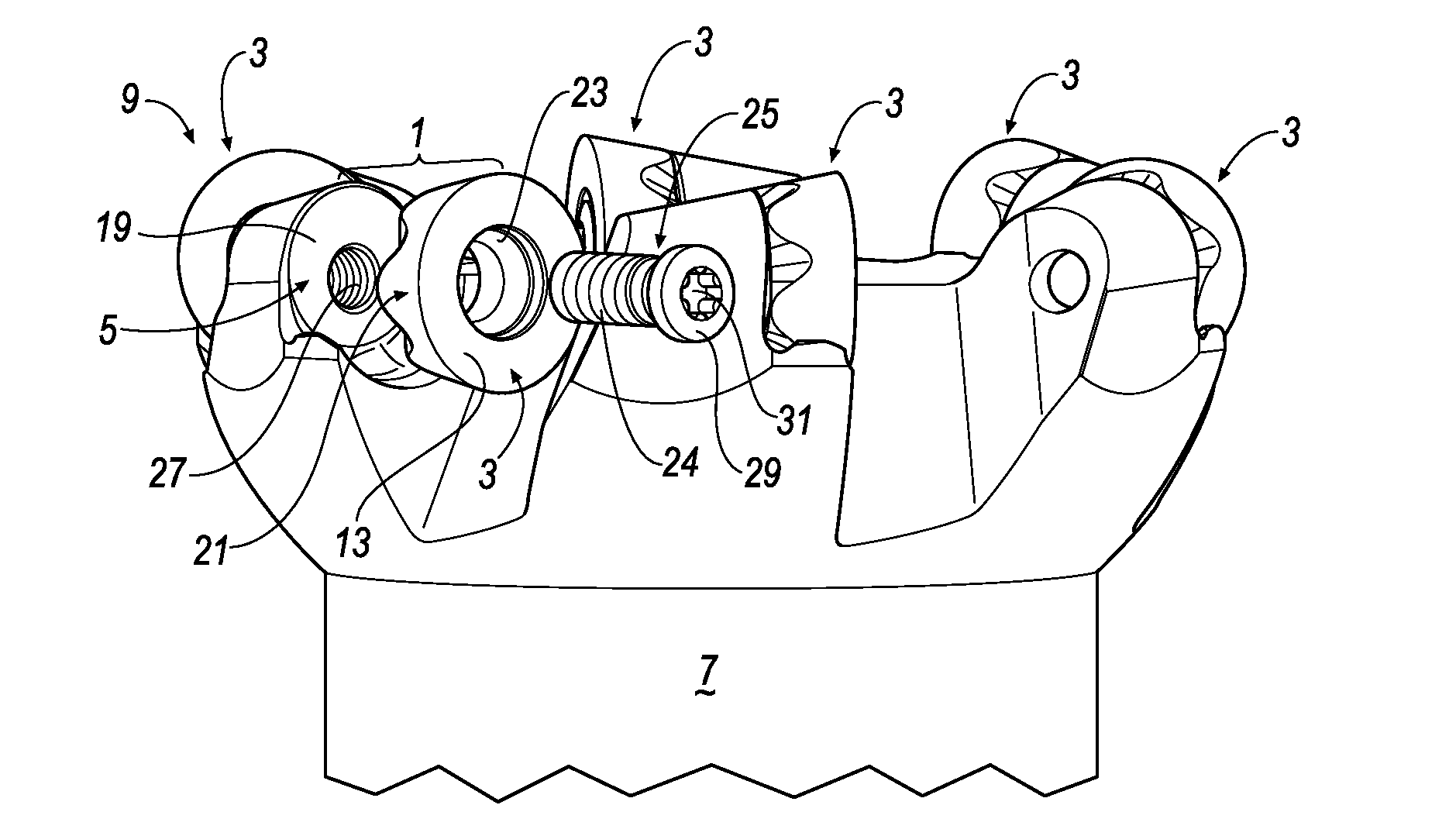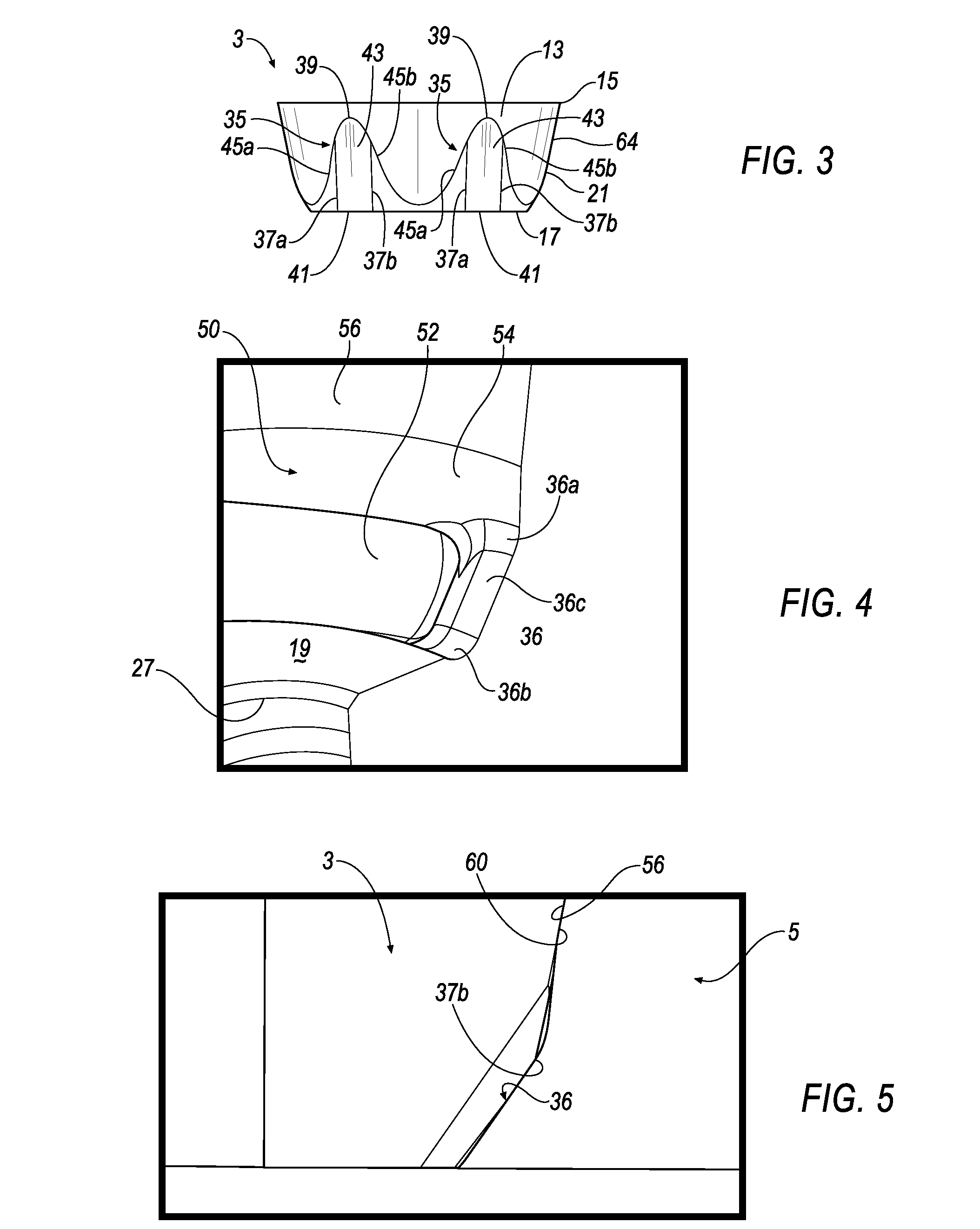Anti-rotation mounting mechanism for a round insert
a mounting mechanism and insert technology, applied in the field of anti-rotation mounting mechanisms for inserts, can solve the problems of affecting the quality of the cut on the workpiece, affecting the quality of the cut, so as to prevent the removal of a weakening amount of material, avoid localized point-type stresses, and equalize stresses
- Summary
- Abstract
- Description
- Claims
- Application Information
AI Technical Summary
Benefits of technology
Problems solved by technology
Method used
Image
Examples
Embodiment Construction
[0026]With reference now to FIGS. 1, 2, and 3, wherein like numerals designate like components throughout all of the several Figures, the anti-rotation mounting mechanism 1 of the invention serves to prevent a round insert 3 from rotating within a pocket 5 present in the body 7 of a milling cutter 9 or other cutting tool. The insert 3 has an upper surface 13 that terminates in a circular cutting edge 15, and a bottom surface 17 that engages the floor 19 of the pocket 5 when the insert 3 is mounted onto the body 7 of the cutter 9. The insert 3 further has a frustro-conical sidewall 21 interconnecting the upper surface 13 and bottom surface 17. A screw hole 23 is centrally disposed through the body of the insert 3 for receiving the threaded shank of a clamping screw 25. The threaded shank 24 is screwed into a threaded bore 27 centrally located in the floor 19 of the pocket 5 in order to secure the insert 3 onto the body 7 of the milling cutter 9. To this end, the clamping screw 25 inc...
PUM
| Property | Measurement | Unit |
|---|---|---|
| angle | aaaaa | aaaaa |
| angle | aaaaa | aaaaa |
| angle | aaaaa | aaaaa |
Abstract
Description
Claims
Application Information
 Login to View More
Login to View More - R&D
- Intellectual Property
- Life Sciences
- Materials
- Tech Scout
- Unparalleled Data Quality
- Higher Quality Content
- 60% Fewer Hallucinations
Browse by: Latest US Patents, China's latest patents, Technical Efficacy Thesaurus, Application Domain, Technology Topic, Popular Technical Reports.
© 2025 PatSnap. All rights reserved.Legal|Privacy policy|Modern Slavery Act Transparency Statement|Sitemap|About US| Contact US: help@patsnap.com



